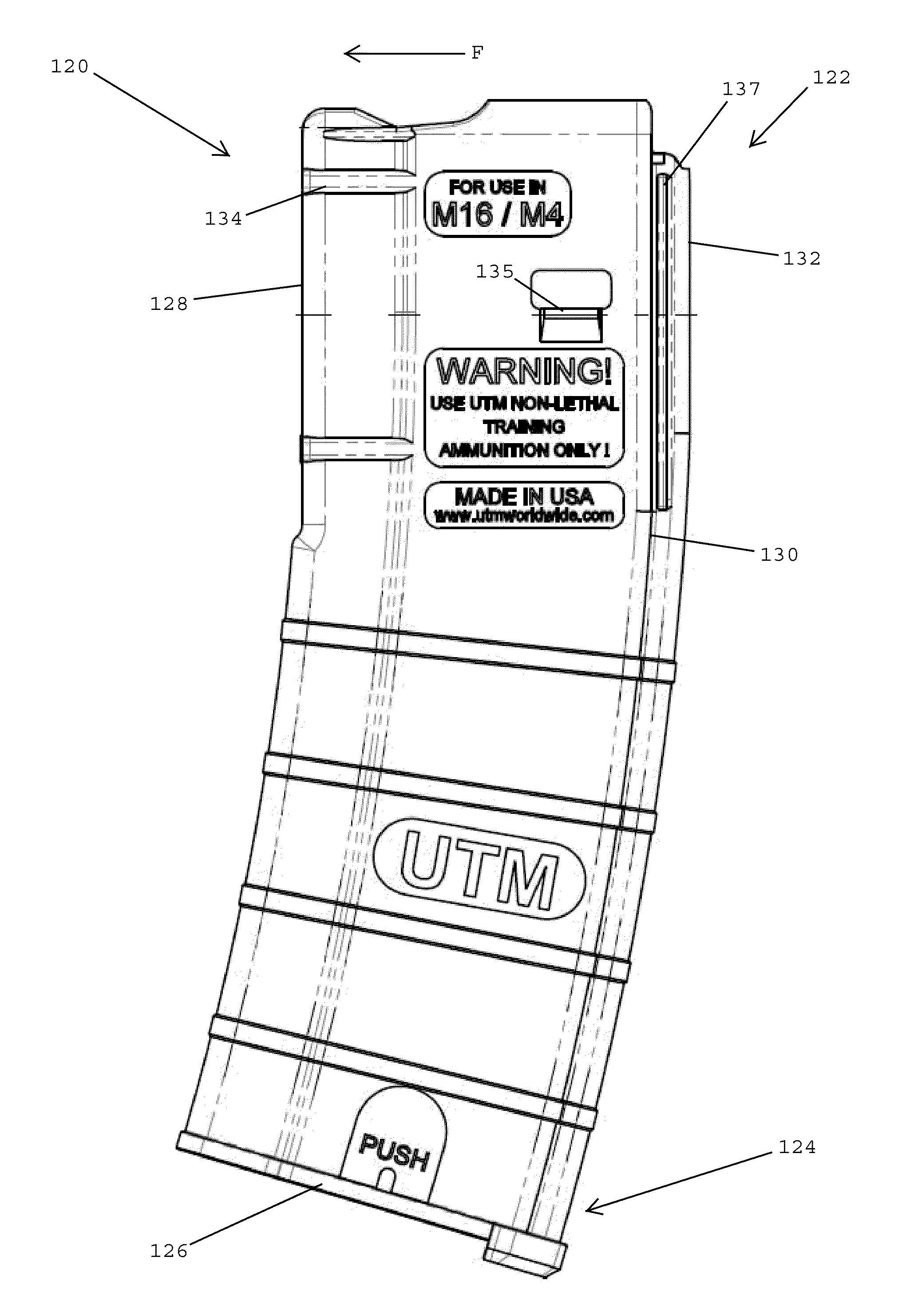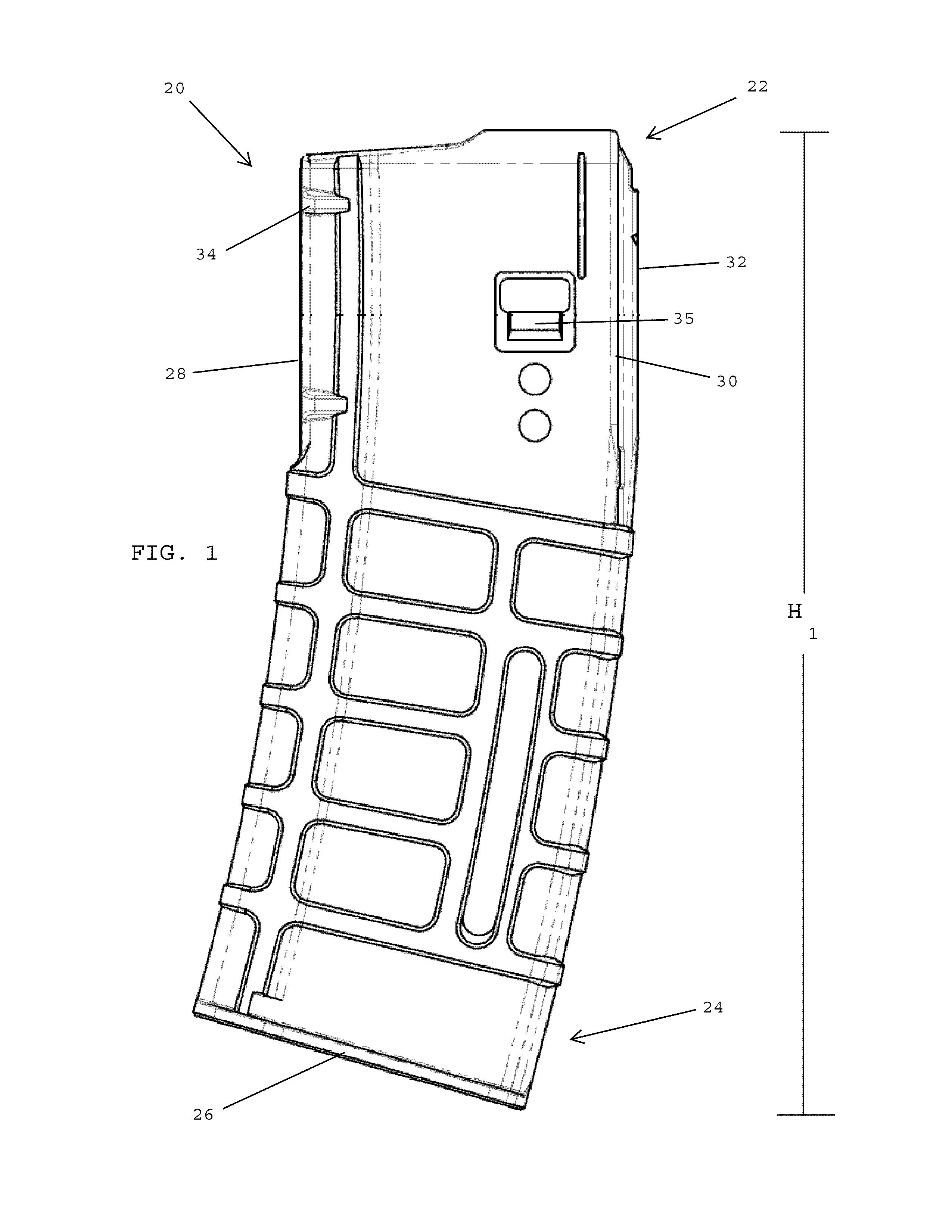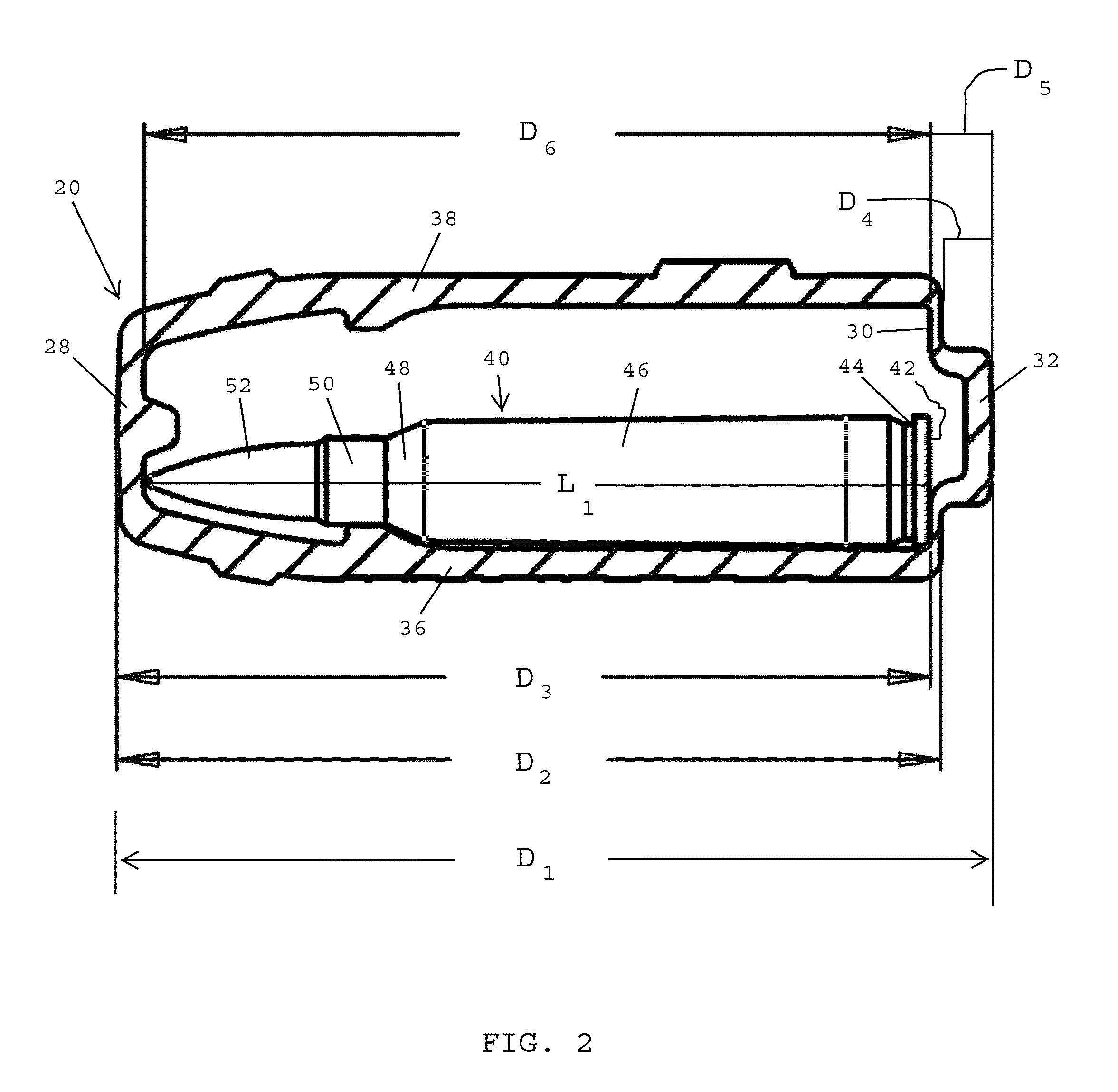Safety magazines for firing non-lethal training rounds and preventing the loading and firing of live rounds
a safety magazine and non-lethal technology, applied in the field of ammunition magazines, can solve the problems of affecting the safety of the live round, the danger of using the same standard magazine for holding both live rounds and blank/training rounds, and the injury or death of those in the line, and dramatically increasing the chance of the live round being accidentally directed
- Summary
- Abstract
- Description
- Claims
- Application Information
AI Technical Summary
Benefits of technology
Problems solved by technology
Method used
Image
Examples
Embodiment Construction
[0045]FIG. 1 shows a standard M16 magazine designated by reference number 20 that is adapted to receive both live rounds, such as 5.56×45 NATO cartridges, and training rounds such as blanks and non-lethal training rounds. The standard M16 magazine 20 has an upper end 22 with a magazine opening adapted to receive live rounds, blanks, and / or training rounds, and a lower end 24 including a base plate 26. The standard M16 magazine 20 has a front wall 28 that extends from the upper end 22 to the lower end 24, and a rear wall 30 that also extends between the upper and lower ends 22, 24. The standard M16 magazine has a height H1 that extends between the upper and lower ends 22, 24.
[0046]The rear wall 30 of the standard M16 magazine 20 preferably includes an alignment rib 32 that is adapted for insertion into an alignment groove formed at the rear end of a M16 style magazine well, as will be described in more detail herein. The standard M16 magazine 20 has one or more alignment flanges 34 f...
PUM
 Login to View More
Login to View More Abstract
Description
Claims
Application Information
 Login to View More
Login to View More - R&D
- Intellectual Property
- Life Sciences
- Materials
- Tech Scout
- Unparalleled Data Quality
- Higher Quality Content
- 60% Fewer Hallucinations
Browse by: Latest US Patents, China's latest patents, Technical Efficacy Thesaurus, Application Domain, Technology Topic, Popular Technical Reports.
© 2025 PatSnap. All rights reserved.Legal|Privacy policy|Modern Slavery Act Transparency Statement|Sitemap|About US| Contact US: help@patsnap.com



